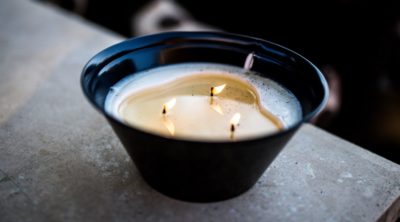
There is a right sewing/embroidery machine for everyone who likes to sew. Sifting through dozens of varieties is cumbersome and needless, especially if you know exactly what to look for. This Buzzle article will help you filter down your options, and aid you in your choice of embroidery machine.
Beyond Needles, Threads, and Designs
“Take your needle, my child, and work at your pattern; it will come out a rose by and by. Life is like that – one stitch at a time taken patiently and the pattern will come out all right like the embroidery.”
― Oliver Wendell Holmes, Sr.
You can explore your creative side with an embroidery machine that will give you the freedom to breathe life into any fabric with a variety of designs. With an embroidery machine, you can create your own personal designs for clothing, window treatments, bedding, and lots of other household items.
You are sure to find machines ranging from the bulky industrial sewing machines to the handy and portable tabletop varieties in the market. Needless to say, seeing such a variety on display is sure to leave you confused. Which is why it is imperative to analyze how you would utilize the sewing machine before you even venture out to purchase one. Given below are the pointers that will help you choose the right sewing machine.
Determining the Sewing Needs
Before you get any further, you need to determine your sewing needs. Before deciding on the type of machine that will meet your requirement, ask yourself whether it’s a mere hobby or you plan to make it a full-fledged business. While a commercial machine will enable you to embroider pretty quickly, a personal use machine need not be as fast or heavy-duty as that of the business-oriented machine. Also, ask yourself how often do you plan to use the machine as this will aid you in your purchase.
Style of Embroidery
In essence, there are three styles of machines used for embroidery. If you already own a sewing machine, you can opt for the dedicated embroidery machine; however, keeping two machines at home is sure to eat up storage space. If this is your very first sewing machine, you can look for a combination machine that will allow you to embroider as and when you please, and use it as a regular sewing machine at other times. If you are thinking of a business venture, an industrial machine equipped with multiple needles and heads will be of immense help.
Type of Machine
There are basically two types of machines available in the market: (i) the high-end machines that are fully computerized; and (ii) the cheaper, yet reliable manual or mechanical models. If you are tech-savvy and gadget-friendly, you can very well opt for the high-end machines that are equipped with touchscreens and programmable stitch sequences. However, these machines come at a relatively higher price, while their humbler mechanical counterparts are not only cheaper, but also lighter than the former. Maintaining a mechanical machine is also easier than a computerized model, and they can be used as starter machines before graduating to the high-end ones.
Body Specifications
Heavy-duty embroidering requires an equally sturdy machine body that will enable you to work easily even with heavier fabrics. While a metal body machine is your ideal and safest bet, it comes with just one downside―of being too heavy to transport the machine from one side to another. There is no dearth of designs when it comes to plastic-bodied machines; however, it is better to opt for a heavy-duty machine to sustain your sewing needs in the long run. Besides, you wouldn’t want your machine to wobble and ruin your pattern while embroidering a piece of fabric. Also, make sure to invest in a good branded machine rather than a mere hobby machine.
Motor Matters
The motor is essentially the heart of the machine. Before you make your purchase, try the embroidery machine. Anything that makes too much noise will be a bad choice unless you purposefully want to snatch away the peace of your family members as well as disturb your neighbors. It makes sense to invest your time searching for a quieter machine, rather than investing in a noisy machine that you yourself will refrain from putting to use on a regular basis. Again, the motor of the machine should be sturdy and come with a valid warranty to last for a longer time.
Number of Stitch Patterns
While you need only two basic stitch patterns to get you through sewing with a regular machine, an embroidery machine comes equipped with tons of stitch options. Do make it a point to consider the stitch options and the stitch length when purchasing an embroidery machine. It is always good to invest in a machine that will allow you to easily adjust the settings to achieve the look you want in that particular design.
Accessories and Additional Features
Foot pedals, auto needle threaders, carry cases, bobbins, walking presser foot, and presser foot are accessories that need to be seen in both mechanized and computerized models. Additional software and design cards are essential to operate your computerized machines. Look out for models that can be connected to the Internet whenever an update for patterns is needed. It will be highly beneficial if you look for a machine that has an inbuilt light that will brighten up your stitching experience.
Weigh Your Options
The Silent One: Janome DC2013
Low on Price: Pfaff 1050s
Dressmakers: Janome HD3000, Janome DKS30
Digitized, but Low on Price: Singer 7258, Janome CXL301
The Quilter: Singer 7469Q, Husqvarna Viking E20
Budget
Last but not the least, choose a machine according to your budget. High-end models will surely be on the higher side when it comes to the price, while a secondhand model will be a better option for someone starting out as a beginner. Also, remember not to invest in cheap plastic models, as they won’t last as long as the trusted brand machines.


